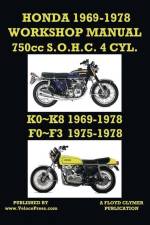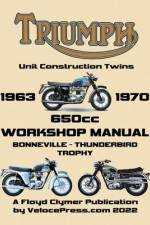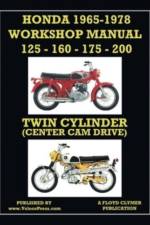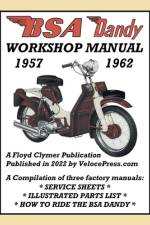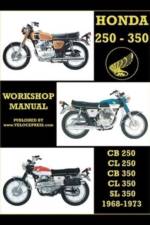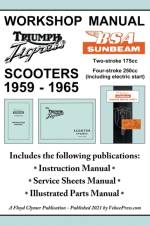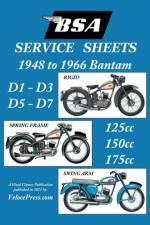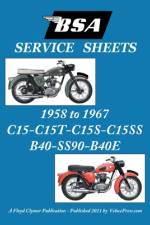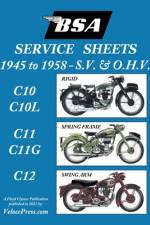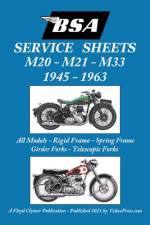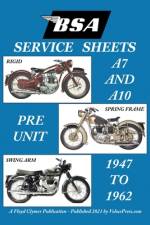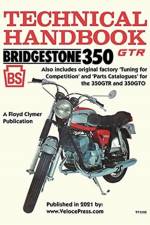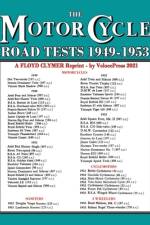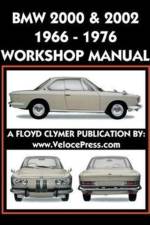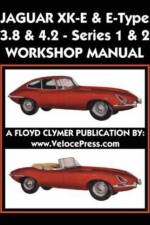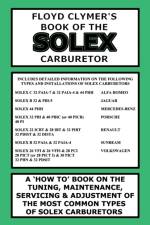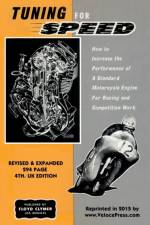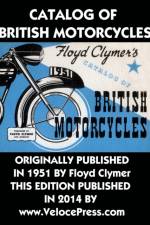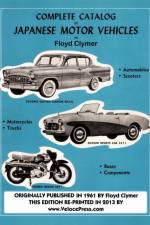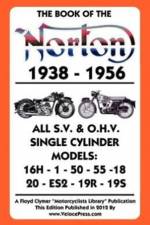av Floyd Clymer
485
186 pages, and more than 150 illustrations and charts, size 8.25 x 10.75 inches. This manual is a compilation of three original factory publications. The first is a reproduction of the 108 page 'Workshop Instruction Manual' for the 1957-64 Lightweight and Heavyweight singles and the twin cylinder models. The second is a reproduction of the 12 page 'Supplementary Instruction Book for Competition Models'. The third is a 60 page 'Instruction Book' combination that is exclusive to the 1958-1966 G2, G5, 14 and 8 Lightweight 250cc and 350cc singles. While the reprint of the original 108 page AMC workshop manual states that it is appropriate for the 1957-1964 models, it actually covers the entire line of AJS and Matchless 250cc to 650cc Lightweight and Heavyweight singles and 500cc to 650cc twins manufactured by AMC through 1966 (see below). Please note that it does not include the 750cc AMC G15/45 (1962-63) or the later Norton/AJS/ Matchless G15 hybrids. Owners of these 750cc hybrids are directed to the 'Norton 1966-70 Lightweight & Heavyweight Twins' workshop manual, ISBN 9781588502421 as it includes significant maintenance and repair information on those models. While the single cylinder machines are always considered the backbone of AMC's post-war production, in 1948 they introduced a 500cc twin cylinder, the AJS model 20 and Matchless G9. However, it was 1957 before that singular model was joined by a number of additional 500cc, 600cc and 650cc twins. In 1958 they also added two 'lightweight' singles to their well respected line of 'heavyweight' singles. Unfortunately, by the mid 1960's, along with most British motorcycle manufacturers, AMC was struggling to compete with the flood of Japanese imports and by 1966, the AMC conglomerate had collapsed. While the reason is mired in mergers, finances, consolidation, politics and worker unrest, both the AJS and Matchless name continued onward, under license, until early 1970, at which point both marques were history. 1957-1966 Lightweight and Heavyweight Singles and Twins covered in this manual are as follows: A.J.S. Models AJS 250cc Lightweight Singles: 14, 14CS, 14S, 14CSR AJS 350cc Lightweight Singles: 8 AJS 350cc Heavyweight Singles: 16MS, 16, 16C, 16MC, 16MCS, 16S AJS 500cc Heavyweight Singles: 18S, 18, 18CSAJS 500cc Twins: 20, 20CS, 20CSR (Also covers the earlier AJS 20 from 1948 onwards) AJS 600cc Twins: 30, 30CS (Also covers the 1955/56 AJS 30)AJS 650cc Twins: 31, 31CS, 31CSR, 650 TwinMatchless Models Matchless 250cc Lightweight Singles: G2, G2CS, G2S, G2CSRMatchless 350cc Lightweight Singles: G5 Matchless 350cc Heavyweight Singles: G3LS, G3, G3C, G3LCS, G3S Matchless 500cc Heavyweight Singles: G80S, G80, G80CSMatchless 600cc Heavyweight Single: TCS. Matchless 500cc Twins: G9, G9CS, G9CSR (Also covers the earlier Matchless G9 from 1948 onwards) Matchless 600cc Twins: G11, G11CS (Also covers the 1955/56 Matchless G11)Matchless 650cc Twins: G12, G12CS, G12CSR, 650 TwinOwners of the AJS Heavyweight singles may also find the following two publications useful: ISBN 9781588501240 'Book of the 1945-60' models and ISBN 9781588501677 'Book of the1955-65' models.Similarly, owners of the Matchless Heavyweight singles are referred to ISBN 9781588502087 'Book of the 1945-1956' models and ISBN 9781588502056 'Book of the 1955-66 models.


